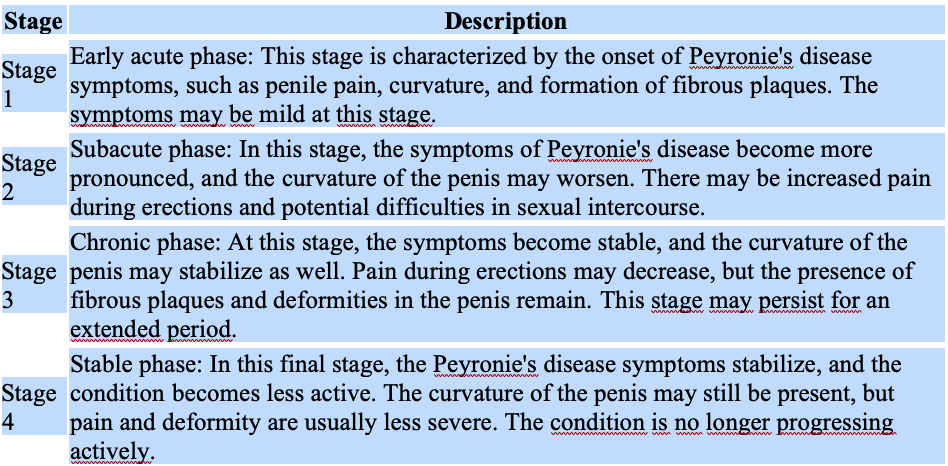
How do you get Peyronie’s disease is an unsolved mystery. The precise cause of Peyronie’s disease remains elusive.

It is believed to result from a combination of factors, encompassing:
-
Repeated Penile Injury: Vigorous sex, specific athletic activities, or accidents can induce injuries leading to the formation of scar tissue in the tunica albuginea, the resilient outer layer of the penis. Over time, this scar tissue may solidify and contract, resulting in penile bending or curvature.
-
Connective Tissue Disorders: Individuals with certain connective tissue disorders, such as Dupuytren’s contracture or keloids, exhibit a heightened likelihood of developing Peyronie’s disease.
-
Genetic Factors: There is suggestive evidence indicating a familial predisposition to Peyronie’s disease.
-
Other Medical Conditions: Certain medical conditions, including diabetes and high blood pressure, are associated with an increased risk of Peyronie’s disease.
It’s noteworthy that not all men experiencing penile injury develop Peyronie’s disease, implying the involvement of additional factors like genetic predisposition or underlying medical conditions.
Symptoms of Peyronie’s Disease:
-
Penile Curvature: The most prevalent symptom, manifesting as mild or severe curvature in any direction.
-
Pain during Erection: Pain, ranging from mild to severe, may be experienced in the penis, scrotum, or groin during erections.
-
Loss of Penile Length or Girth: While less common than curvature or pain, some individuals may notice a decrease in penile size.
-
Plaque Formation: Hard lumps or bumps, known as plaques, can be palpable under the skin of the penis.
If you are encountering any symptoms of Peyronie’s disease, seeking prompt medical attention is crucial. Early diagnosis and intervention play a pivotal role in symptom improvement and can potentially impede the progression of the disease.

